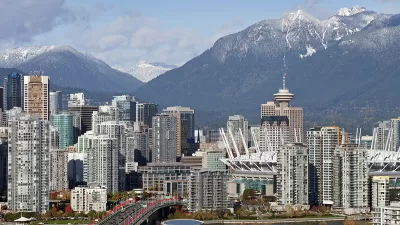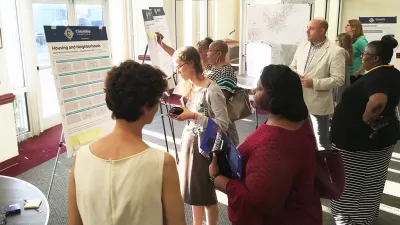Many thanks to Wired’s Jeff Howe who’s 2006 article “The Rise of Crowdsourcing” put an effective label at what the internet was doing to business. Building from Web 2.0 applications focused on social media like Facebook and on-line communities, it’s become a popular and controversial term in tech circles. For those not as familiar with the idea, let’s consult the most often used example of crowdsourcing – Wikipedia. “Crowdsourcing is a distributed problem-solving and production model. Problems are broadcast to an unknown group of solvers in the form of an open call for solutions.
Many
thanks to Wired's Jeff Howe who's 2006 article "The Rise of Crowdsourcing" put
an effective label at what the internet was doing to business. Building from Web 2.0 applications focused on
social media like Facebook and on-line communities, it's become a popular and
controversial term in tech circles. For
those not as familiar with the idea, let's consult the most often used example
of crowdsourcing – Wikipedia. "Crowdsourcing is a distributed
problem-solving and production model. Problems are broadcast to an unknown
group of solvers in the form of an open call for solutions. Users-also known as
the crowd-typically form into online communities, and the crowd submits
solutions. The crowd also sorts through the solutions, finding the best ones." To
boil this down in the case of Wikipedia the content is fully created by the
crowds.
I'm
certainly not the first to link this idea with planning. Fellow blogger Chris Steins posted an
excellent summary of Web 2.0 applications, including crowdsourcing, with direct relevance to city planning in 2009. The fundamental idea is that the crowd (or
broader public) is an active collaborator in developing the plan. This is more than writing notes on a flip
chart or map at a public meeting (still important by the way), but a process
where the public has a larger hand than traditionally given to shape a plan's specific
content and implementation priorities.
There
have been a growing number of experiments with different tools that
specifically explore versions of the crowdsourcing idea whether it's in planning
for bicycles, designing bus
stops, or ratting on
public officials' parking habits. Pittsburgh used a wiki to
gain insight and comments on major planning initiatives and President Obama's
Urban Policy has been up for voting for some time. Crowdsourcing is even being used in the
Broadmoor neighborhood in New Orleans as a means to guide actual bricks and
mortar development (all credit for this example comes through the CoolTown Beta
Communities who have made
crowdsourcing their raison d'etre).
A
skeptic might browse these examples and feel that this is really just "public
outreach on-line" or, if he/she was feeling generous, a more robust version
thereof. Further, what about those not
on-line? Is this only for the digitally
adventurous?
No,
but new technologies certainly make the concept a lot easier to explore. We've been developing on-line collaborative
maps tied to our planning work to encourage residents to generate ideas. However, given the environments we are typically
working in with relatively low numbers of people on-line, we have also created accompanying
large-scale, hard copy versions of that same map installed in highly visible
community spaces. The point is that
crowdsourcing, or the use of any specific on-line tool like Facebook or
Twitter, cannot replace traditional face to face interaction but augment it. They are simply another tool to get the word
out and foster communication, which is what I believe planning is grounded
in.
Other
skeptics have even
suggested that there are not really any "crowds" in crowdsourcing. How can you be sure you're tapping a good
cross-section of a community through on-line outreach activities? There's certainly some truth here. A large amount of on-line activity whether
it's in writing Wikipedia entries or contributing ideas to a local plan is
often generated by a group of really motivated individuals. But this will sound familiar to anyone that
has been a community organizer. It's
often the few really dedicated people that devote their time and energy to a
cause and motivate others to support them.
There
are other challenges to consider.
Tapping the wisdom of crowds means managing them. Large-scale efforts to crowdsource will
require time to facilitate content – this will be difficult at large scales
where potentially thousands of people choose to get involved. Of course, there's also the potential opposite
challenge - a lack of interest in the plan or cultural and/or language barriers
could result in too few participants which limits the potential of
crowdsourcing.
But
with some of the challenges noted, the benefits are pretty obvious. By activating residents to truly participate
and contribute we [those that are in charge of managing the plan from City
officials to consultants] foster transparency and a real connection to the
public who will ultimately be impacted by the plan. Equally important, we benefit from the value
of ideas and insights we could not know, or easily learn, ourselves. The result can be a more grounded and
meaningful plan.
It
might sound that if you opened a planning process up to crowdsourcing, that we
would essentially erase the planner's authorship. I don't believe so. The final plan, it's technical information
and understanding of implementation activities still need to be managed by
someone trained in those skills. Our
ability to creatively edit the information and ideas from the crowdsourcing
process will be an important skill to further develop.
And
of course, there are limitations. A
large number of people in a community can identify one vacant property as the
key priority for development but if that property is privately owned, in some
kind of legal limbo, or simply lacking access to capital to make the project
work - no amount of voting or collective concern can change the facts. Crowdsourcing is not a process of writing
down whatever community members say and calling it a day but rather openly
managing, and editing, active community input such that the end plan is also
realistic.
Ultimately,
the major factor impacting whether crowdsourcing is a workable idea in any
given location is if the sponsor of the plan be it a neighborhood group, city
or MPO truly takes it seriously. You can't
have true participation and a collaborative planning process if the end result
is already in mind.

Planetizen Federal Action Tracker
A weekly monitor of how Trump’s orders and actions are impacting planners and planning in America.

Congressman Proposes Bill to Rename DC Metro “Trump Train”
The Make Autorail Great Again Act would withhold federal funding to the system until the Washington Metropolitan Area Transit Authority (WMATA), rebrands as the Washington Metropolitan Authority for Greater Access (WMAGA).

The Simple Legislative Tool Transforming Vacant Downtowns
In California, Michigan and Georgia, an easy win is bringing dollars — and delight — back to city centers.

Albuquerque’s Microtransit: A Planner’s Answer to Food Access Gaps
New microtransit vans in Albuquerque aim to close food access gaps by linking low-income areas to grocery stores, cutting travel times by 30 percent and offering planners a scalable model for equity-focused transit.

This City Will Pay You to Meet Your Neighbors
A North Kansas City grant program offers up to $400 for residents to throw neighborhood block parties.

Commentary: Our Silence Will Not Protect Us
Keeping our heads down and our language inoffensive is not the right response to the times we’re in. Solidarity and courage is.
Urban Design for Planners 1: Software Tools
This six-course series explores essential urban design concepts using open source software and equips planners with the tools they need to participate fully in the urban design process.
Planning for Universal Design
Learn the tools for implementing Universal Design in planning regulations.
Smith Gee Studio
City of Charlotte
City of Camden Redevelopment Agency
City of Astoria
Transportation Research & Education Center (TREC) at Portland State University
US High Speed Rail Association
City of Camden Redevelopment Agency
Municipality of Princeton (NJ)





























